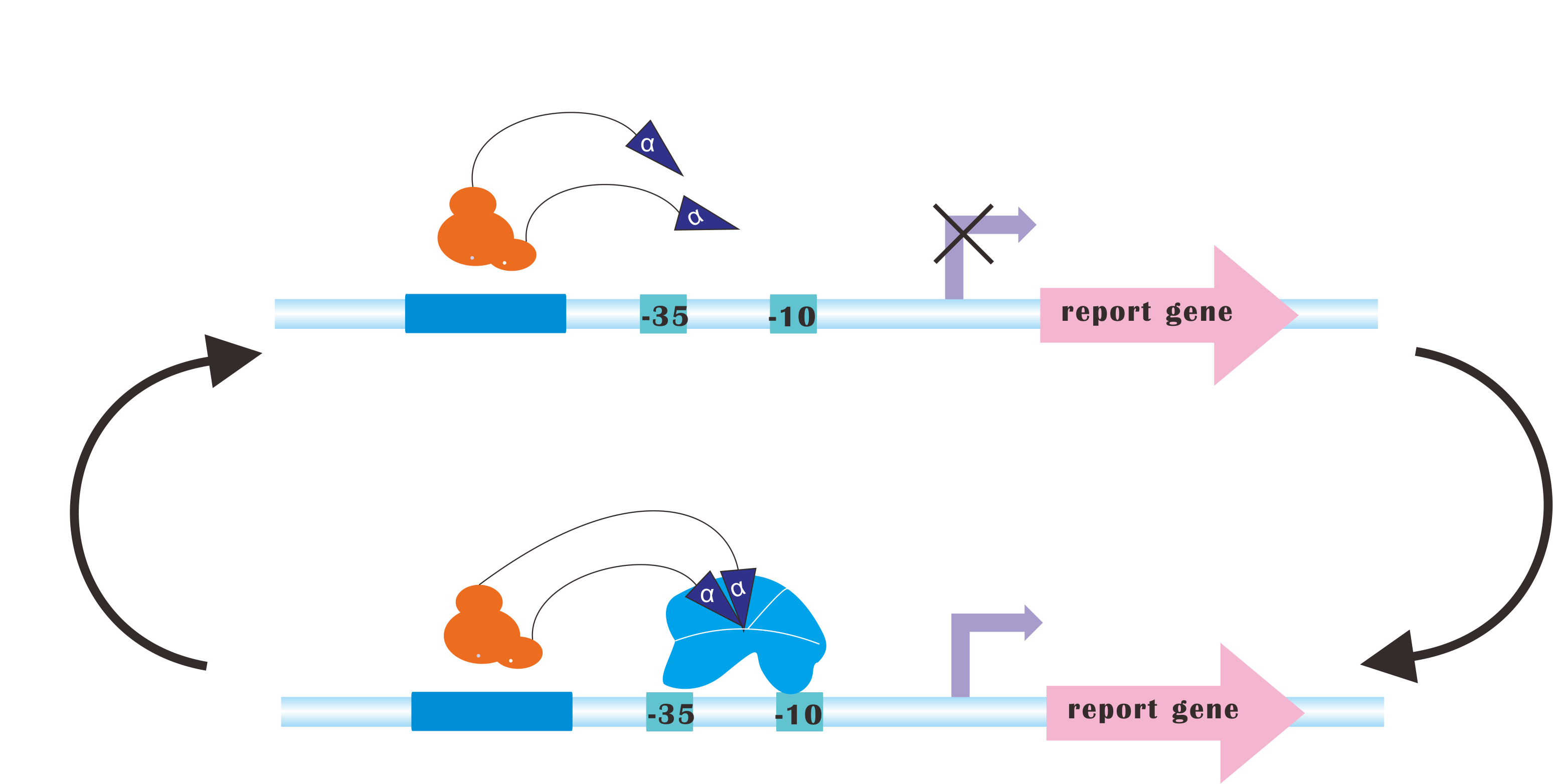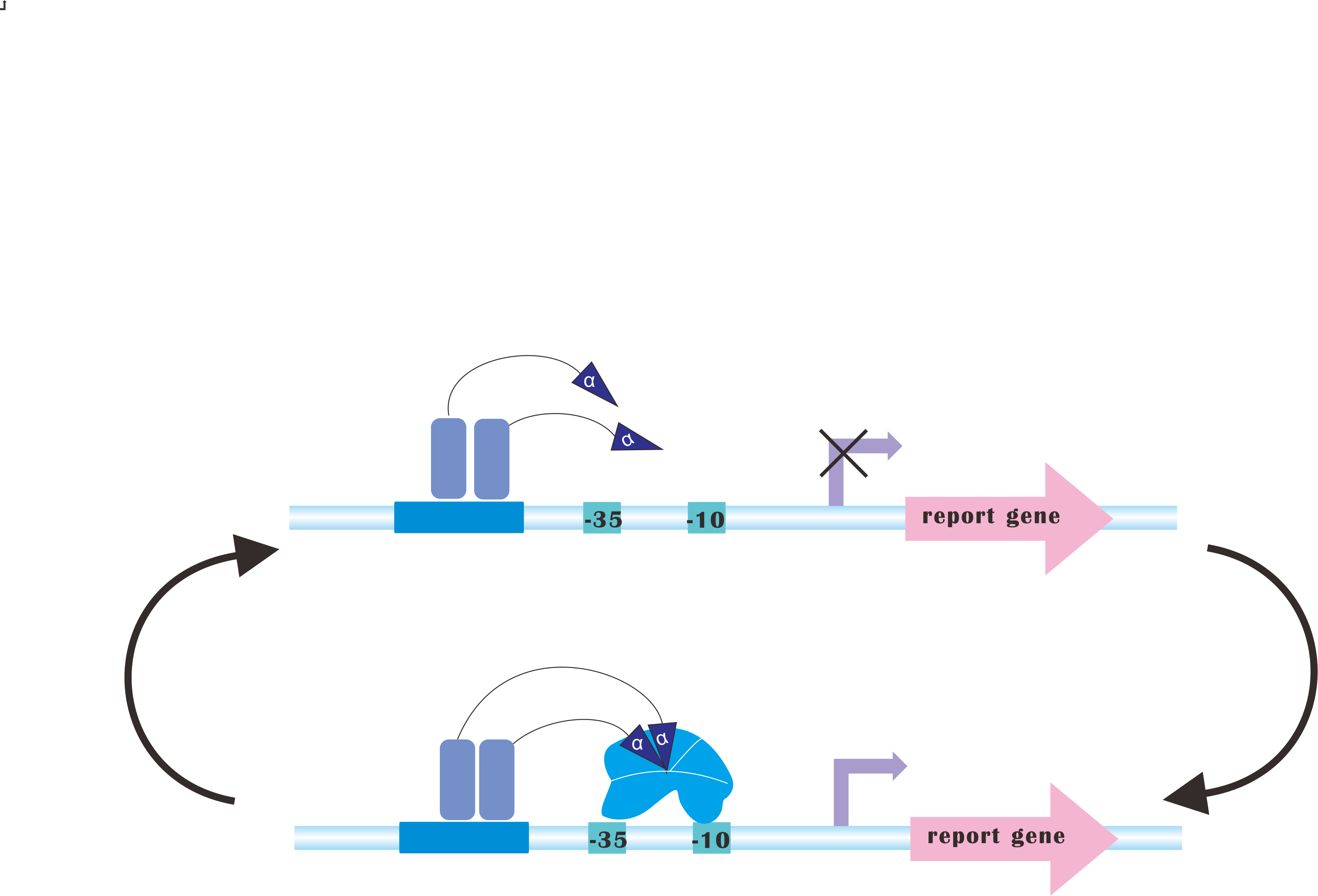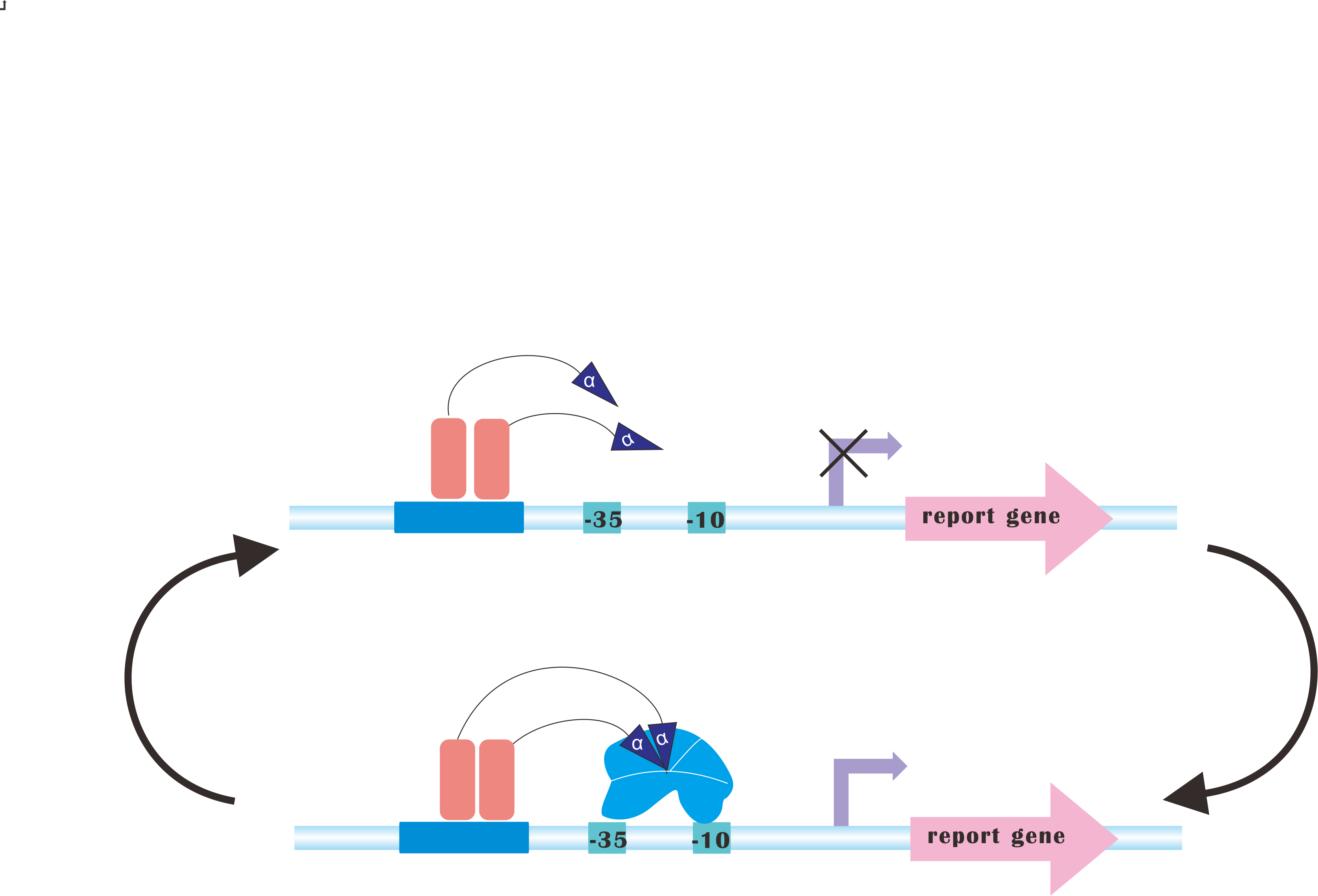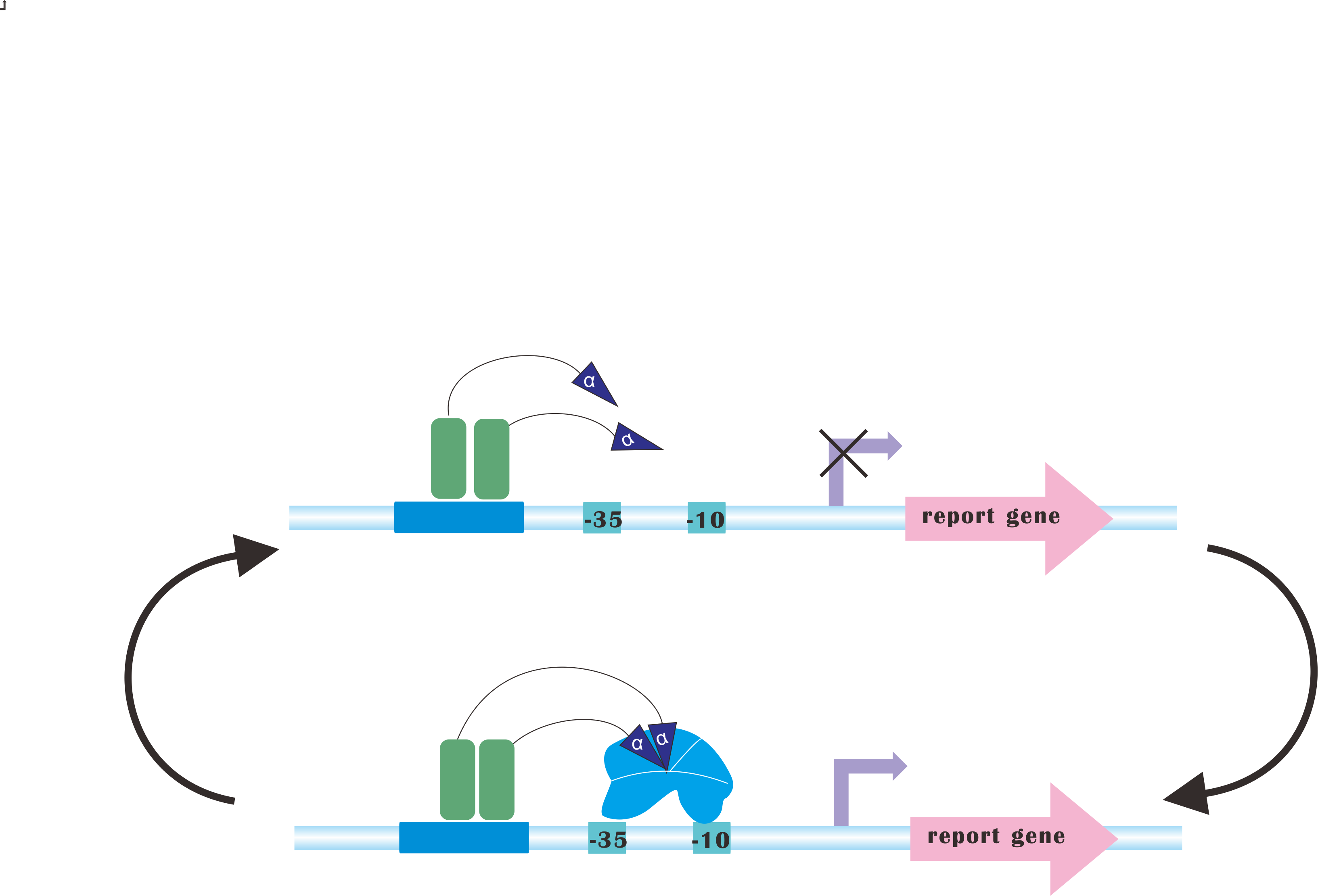Team:SJTU-BioX-Shanghai/Prospect
From 2013.igem.org
(→Smaller Light Sensor) |
(→Absolutely Automatic) |
||
| (7 intermediate revisions not shown) | |||
| Line 27: | Line 27: | ||
__NOTOC__ | __NOTOC__ | ||
<!----------------------------------------------------从这里开始写wiki---------------------------------> | <!----------------------------------------------------从这里开始写wiki---------------------------------> | ||
| - | =CRISPRi-on= | + | =CRISPRi-'''on'''= |
| + | [[File:CRISPRon_in_Ecoli.png|thumb|400px|right]] | ||
<br> | <br> | ||
| - | At present, our Metabolic Gear Box, which combines CRISPRi with light sensors, only down-regulates three genes of a pathway. However, in many other cases, genes in a synthetic pathway are supposed to be up-regulated in order to acquire the most products. | + | At present, our Metabolic Gear Box, which combines CRISPRi with light sensors, only down-regulates three genes of a pathway. However, in many other cases, genes in a synthetic pathway are supposed to be '''up'''-regulated in order to acquire the most products. |
<br> | <br> | ||
A newly devised tool, CRISPR-on, has provided some inception. CRISPR-on devisers simply fuse a transcriptional activation domain with dCas9 to create a sequence-specific transcription activating tool. CRISPR-on has been proved to be effective in human and mouse. We expect to conduct similar work in our bio-factory, ''Escherichia coli''. | A newly devised tool, CRISPR-on, has provided some inception. CRISPR-on devisers simply fuse a transcriptional activation domain with dCas9 to create a sequence-specific transcription activating tool. CRISPR-on has been proved to be effective in human and mouse. We expect to conduct similar work in our bio-factory, ''Escherichia coli''. | ||
<br> | <br> | ||
| - | Our plan is to fuse alpha factors with dCas9 protein, which has previously been proved to be a successful method to create blue-light-induced transcription factors (Camsund et al., 2011). Our design is shown below. | + | Our plan is to '''fuse alpha factors''' with dCas9 protein, which has previously been proved to be a successful method to create blue-light-induced transcription factors (Camsund et al., 2011). Our design is shown below. |
<br> | <br> | ||
| - | |||
<br> | <br> | ||
| - | However, to integrate CRISPRi and CRISPR-on would never be an easy task, since sgRNA for CRISPR-on is supposed to target upstream of promoter, rendering it necessary to incorporate logical switches. | + | However, to integrate CRISPRi and CRISPR-on would never be an easy task, since sgRNA for CRISPR-on is supposed to target upstream of promoter, rendering it necessary to incorporate '''logical switches'''. |
<br> | <br> | ||
=Smaller Light Sensor= | =Smaller Light Sensor= | ||
| + | [[File:2blue.png|thumb|Existing Tiny Blue Sensor|left]][[File:2red.png|thumb]][[File:2green.png|thumb|right]] | ||
The RGB light sensors we currently utilize are all large systems, with proteins consisting of some five-hundred amino acids. Therefore, it would help simplify our system a lot if there are small sensors. | The RGB light sensors we currently utilize are all large systems, with proteins consisting of some five-hundred amino acids. Therefore, it would help simplify our system a lot if there are small sensors. | ||
| - | The smallest light sensors are no doubt those light-induced dimerizing transcription factors (Camsund et al., 2011), containing no more than one-hundred amino acids. Furthermore, these direct sensors has claimed to be extremely sensitive. | + | The smallest light sensors are no doubt those <b>light-induced dimerizing transcription factors </b>(Camsund et al., 2011), containing no more than one-hundred amino acids. Furthermore, these direct sensors has claimed to be <b>extremely sensitive</b>. |
Unfortunately, all reported small sensors in E. coli senses blue light. So we would attempt on creating tiny sensors for red and green light. | Unfortunately, all reported small sensors in E. coli senses blue light. So we would attempt on creating tiny sensors for red and green light. | ||
| - | + | With small sensors, we might be able to incorporate all our platform into the genome of a bacteria strain, except a plasmid consisting of all three light-regulated sgRNA. In this way, our platform is reorganized into three parts: | |
| + | * The bacteria strain with endogenously expressed dCas9 and light sensors. | ||
| + | * A sgRNA vector that is remained to be modified by our clients. | ||
| + | * The luminous system. | ||
| + | And it is also our hope that this bacteria strain could be widely used for pathway optimization researches, just as DH5alpha has been a common choice for molecular cloning, and BL21(DE3) has been a favored strain for protein expression. | ||
=Absolutely Automatic= | =Absolutely Automatic= | ||
| Line 51: | Line 56: | ||
At present, our platform only analyzes metabolic fluxes (namely, SBML files), conduct flux balance analysis, calculating optimal expression levels of those genes and send commands to the luminous device. But after the regulation process, you may still need to re-adjust those parameters according to the producing rate of desired product(s). | At present, our platform only analyzes metabolic fluxes (namely, SBML files), conduct flux balance analysis, calculating optimal expression levels of those genes and send commands to the luminous device. But after the regulation process, you may still need to re-adjust those parameters according to the producing rate of desired product(s). | ||
But how about we add a feedback path! And the system automatically iterate to sample the FBA space, finding an optimal, or at least a quasi-optimal for you. It is hard, but we would get a try. :) | But how about we add a feedback path! And the system automatically iterate to sample the FBA space, finding an optimal, or at least a quasi-optimal for you. It is hard, but we would get a try. :) | ||
| + | <br><br> | ||
| + | |||
| + | <html> | ||
| + | <h1 style="color:grey;">References</h1> | ||
| + | <p style="color:grey;"> | ||
| + | <br> | ||
| + | CAMSUND, D., LINDBLAD, P. & JARAMILLO, A. 2011. Genetically engineered light sensors for control of bacterial gene expression. Biotechnol J, 6, 826-36. | ||
| + | <br/><br/> | ||
| + | CHENG, A. W., WANG, H., YANG, H., SHI, L., KATZ, Y., THEUNISSEN, T. W., RANGARAJAN, S., SHIVALILA, C. S., DADON, D. B. & JAENISCH, R. 2013. Multiplexed activation of endogenous genes by CRISPR-on, an RNA-guided transcriptional activator system. Cell Research, 23, 1163-1171. | ||
| + | </p></html> | ||
Latest revision as of 05:21, 18 October 2013
|
| ||
|
 "
"



